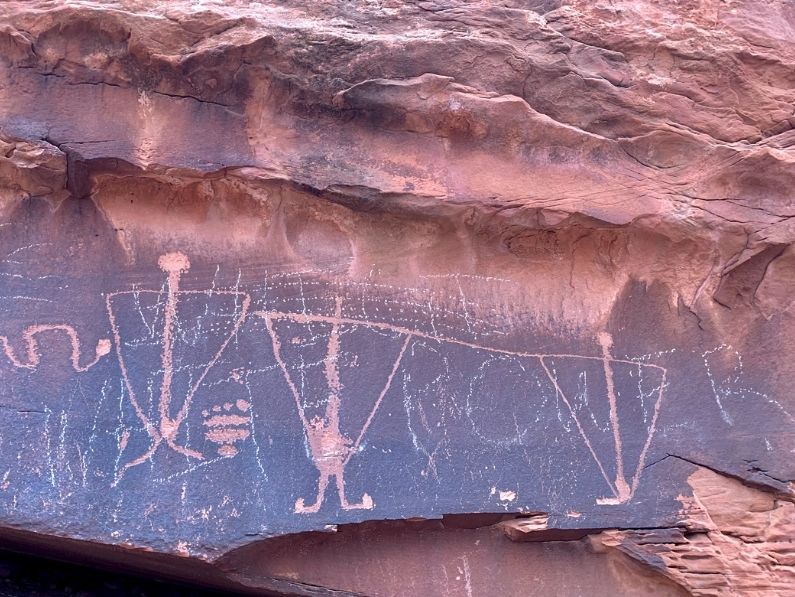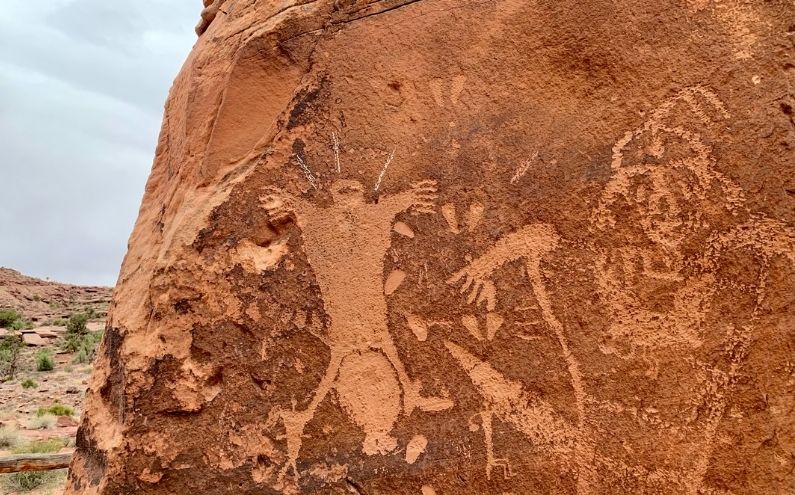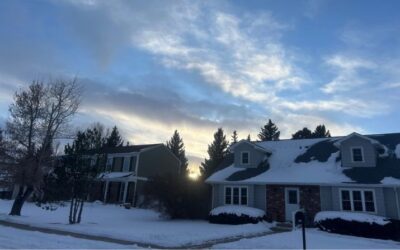This story comes to KHOL through the Rocky Mountain Community Radio collaborative and KZMU Community Radio in Moab, Utah.
The Bureau of Land Management is investigating vandalism at Birthing Rock, a petroglyph panel in the Moab area estimated to be at least 1,000 years old. The vandalism included the phrase ‘white power’ scrawled over anthropomorphic figures. The BLM Utah office said vandalism and graffiti erase the important stories of Indigenous people who came before us and are still important to the spiritual and cultural lives of living Indigenous communities.
KZMU’s Molly Marcello spoke to former BLM Moab archeologist Don Montoya about what he calls a ‘crisis’ in destructive behavior. Montoya currently works as a consultant for the repatriation of Native American human remains and sacred objects.
KZMU: Don, thank you so much for speaking with me today. You and I actually spoke a couple years ago, in 2019, about graffiti and vandalism on public lands. And it was sort of in the context of ‘more of it seems to be happening with increased visitation.’ So, I’m curious if you thought we were approaching some sort of crisis—and feel free to interpret that phrase, however you want—but, you know, when it comes to destructive behavior, and archaeological and cultural sites?
DON MONTOYA: Going back to a conversation a couple of years ago, I put it in the context of social media. That these sites were more apparent to the public because it brought forward through social media—social media context. And that was my thought at the time. But reflecting back, I think it’s more complex than that. Given what’s happening, or what’s happened in the last couple of years, we’re approaching a crisis. And the crisis isn’t necessarily rock art vandalism. Rock art vandalism is reflective of something else. It’s more symptomatic. And I think it’s symptomatic of the social unrest that we have.
You know, we’re going through right now a lot of social unrest from the COVID-19 pandemic. The economic uncertainty. Ideological polarization as well. The damage, I think, is reflective of these issues and people acting out. It’s more than just some of the rock imagery damage in the past—‘Tom loves Jane’—with a heart around it. People, ignorantly, you know, putting their names on the rock. It’s much more complex than that. So, I think it’s emblematic of what’s happening in society. Rock art is an easy target.

The phrase ‘white power’ was scrawled across the Birthing Rock petroglyph last week. (Molly Marcello/KZMU)
KZMU: You know, you said, we’ve always had bad actors. Do you also include people who have shot at petroglyphs or, you know, individuals or even institutions that have participated in looting by stealing remains and other items at sacred sites?
MONTOYA: We can drill down deeper in that, and this is just a social commentary. There were people living here before 1847. And I don’t think that’s realized, you know, people come over the mountaintop, and they don’t see big, large cities and villages, and make the assumption that nobody is there, we’ll just take it, you know, it’s part of our cultural history of Manifest Destiny. That’s what we’re fighting is the institutionalization [of] racism. It’s just not having a cultural sensitivity. And I attribute a lot of that to ignorance. Ignorance is lack of knowledge. You know, people that don’t know that can be taught. If you’re ignorant, you can still learn.
And it goes back to you know, there’s a lot of things, you know, place naming, for example, we just passed a bill, this last legislative session to take a look at place naming of Native American archaeological sites—actually their geophysical sites or map sites. So, there was a bill that was passed this last legislative session, to get USGS [United States Geological Survey] the process of changing place names of derogatory ‘squaw peak’ or ‘squaw park’ and make it easier to address the bureaucracy that it would take to make place name changes. And issues yet to come forward. You know, for example, the naming of Fremont Indians. There’s no tribe that has an affiliation with civil war general John C. Fremont, you know, and yet we’ve got place naming of people associated with him. That that further disenfranchises the Native peoples.
KZMU: It sounds like these issues are bigger than one person scrawling a racist phrase across a petroglyph site, but perhaps those actions are symptomatic of a larger illness.
MONTOYA: Yeah and I think we need to address the illness and treat the symptoms of course, [but] the symptoms are not causal. They’re not the cause.
KZMU: Don Montoya, former BLM archeologist in the Moab, Utah, field office. The federal agency is offering a $10,000 reward for information for information leading to the arrest and conviction of the person or people responsible for vandalizing the Birthing Rock petroglyph panel in the Moab area.
BLM staff have completed some minimal emergency treatment of the Birthing Rock vandalism. The agency said a professional conservator will perform additional work on the site in the future.






